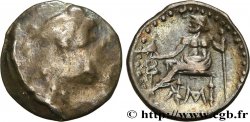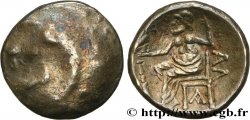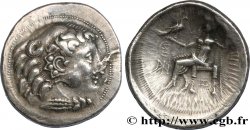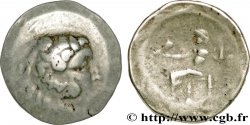bga_187804 - DANUBIAN CELTS - IMITATIONS OF THE TETRADRACHMS OF ALEXANDER III AND HIS SUCCESSORS Bronze, imitation du type d’Alexandre III
Not available.
Item sold on our e-shop
Price : 120.00 €
Item sold on our e-shop
Price : 120.00 €
Type : Bronze, imitation du type d’Alexandre III
Date: c. IIe siècle AC.
Metal : bronze
Diameter : 16 mm
Orientation dies : 6 h.
Weight : 4,27 g.
Rarity : R1
Coments on the condition:
Exemplaire très intéressant et bien conservé avec une très agréable patine noire et brillante
Obverse
Obverse legend : ANÉPIGRAPHE.
Obverse description : Tête imberbe d’Héraklès à droite, coiffé de la léonté.
Reverse
Reverse description : Cavalier à droite.
Reverse legend : LI.
Commentary
Ce bronze, très proche des prototypes grecs, semble être une imitation ou une monnaie importée.








 Report a mistake
Report a mistake Print the page
Print the page Share my selection
Share my selection Ask a question
Ask a question Consign / sell
Consign / sell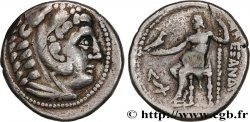
 Full data
Full data